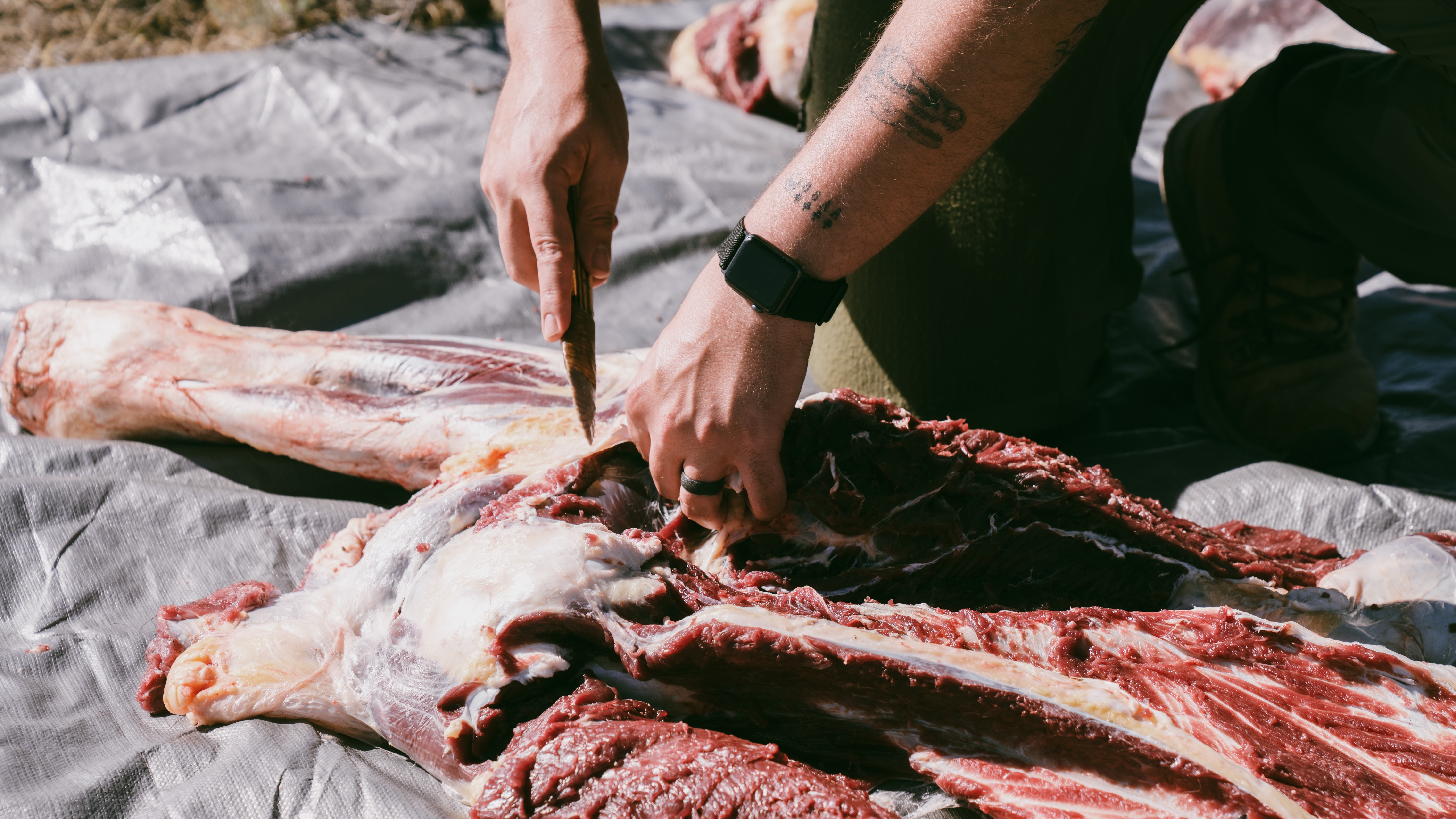
In September, 2022, a gang of us from MeatEater worked with a team of archaeologists to butcher a freshly killed buffalo with the same stone tools used by the Clovis culture, a group of Ice Age hunter-gatherers known for the beauty of their large and distinctive projectile points. Now, those archeologists have published what that experiment revealed about Clovis points and Ice Age butchery, and you can read the whole thing for free, here.
The idea behind the project was to have five expert field butchers—me, Ryan Callaghan, Clay Newcomb, Spencer Neuharth, and John Hayes from Hayes Taxidermy Studio—work together to gut, skin, and debone the 1,000-pound carcass while researchers from Kent State University, Southern Methodist University, and University of Oregon recorded our actions and cataloged the tools and bones to be analyzed for breaks, chips, scratches, and cut marks related to the butchering process.

The point of the experiment was to help solve some of the mysteries surrounding the use and application of various stone tools that archaeologists find in association with “faunal remains,” meaning old bones, at kill sites and butchering sites dating back from over 10,000 years ago.
When you’re dealing with a site that old, the only things that haven’t rotted away are the stone knives and projectile points that were lost or left behind, and whatever bones weren’t hauled away by the hunters or chewed up by rodents and predators. Any flesh or skin from the animal has decomposed and so have any wooden knife handles, spear shafts, or atlatl parts.
The quantity and condition of the animal’s bones is a matter of luck. If a bison or mammoth was butchered in a creek bottom and a flood quickly covered up the remains with sediment, there’s a chance that the bones will be preserved. If the animal was butchered on a rocky ridgetop, probably not.
Trying to piece together the hunting and butchering techniques of these ancient humans is a tricky business with so few clues to go by. An experimental archaeology project like our bison butchering job can help researchers make some sense out of what they’re seeing on the stones and bones by giving them something to compare to.
We weren’t intending to replicate how Clovis people butchered their bison – that would be impossible. Instead, as the authors of the study describe it, “our experiment was intended to produce empirical data on the mechanical properties of the tools themselves, illustrate some of the interpretive possibilities we might see in the archaeological record, and perhaps be used as a model against which Clovis archaeological data could be compared.”
For instance, let’s say you’re an archaeologist and you find busted Clovis points lying near the spine of a bison in which the rib slabs seemed to have been cut away and hauled off. Many of us would assume that those “projectile points” had been driven into the living animal and perhaps broke in half due to the power of the thrust or the movement of the animal as it died.
But then you do an experiment like this and you find that a Clovis point that’s been hafted to a wooden handle is a great tool for separating the joints of a rib cage. And you also find that the butchers snap a couple in half while doing the job. Well, such things might get you wondering about your assumptions.
Or, as the archaeologist Metin Eren put it, “I used to think that the power of experimental archaeology was that it allowed us to help reverse engineer past technologies. And it can. But, I think a more valuable aspect of experimental archaeology that’s becoming more and more consequential is that it…[provides] a vital check on archaeologists’ interpretations.”
I can speak for all of us field butchers when I say that our involvement in this project was a career highlight. When you take hunting seriously enough to regard it as a discipline, you can’t help but develop a deep respect and admiration for the hunting cultures that came before you—especially those cultures whose success in the field was a matter of life and death. To help shed some light, however minor, on their tool kits and skill sets was an honor.
It was also revelatory. We went into the job assuming that it would take all day (and probably into the night) to butcher a bison with stone tools. We were wrong. It only took about three hours. I also assumed that I’d do the job and then move on with my life. I was wrong about that, too. It’s been eighteen months and I don’t go a week without telling someone about that day in the field and the resulting study. I can’t wait to do something like that again.
And just yesterday, we hung the skull from that bison in our new MeatEater store in downtown Bozeman, Montana. Whenever someone asks about it, I’ll be sure to mention that it was removed from the body with a hunk of sharp stone.
Click here to download and read the full paper.





